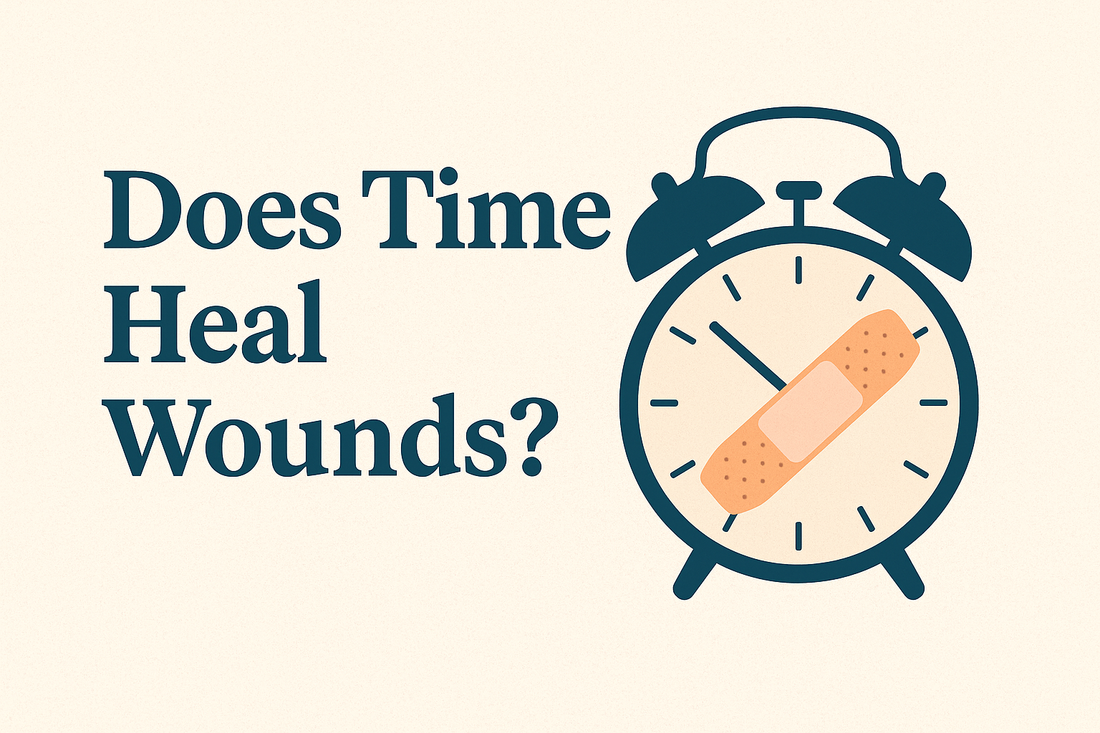Share

Does Time Heal Wounds
Share
Does Time Really Heal All Wounds?
We've all heard the saying, *Time heals all wounds.* But does it really? It’s a comforting phrase, one that people often repeat when they don’t know what else to say. But the truth—the raw, unfiltered truth that no one really talks about—is that time, on its own, heals nothing when it comes to emotional pain.
The Myth of Time as a Healer
Emotional pain is not like a broken bone. When you break a bone, you go to the doctor, they take an X-ray, they diagnose the issue, and they put it in a cast. That cast holds everything together, providing the necessary support for the bone to heal properly. Over time, the bone knits itself back together, and eventually, the cast is removed, revealing a fully restored limb.
But emotional pain? There’s no cast for a broken heart. There’s no splint for an anxious mind that overthinks itself into exhaustion. There’s no prescription for grief that numbs the ache without numbing the soul. And yet, we continue to believe that time alone will heal us.
The Illusion of Healing Through Time
I’ve been there. I thought, *It’s been a year. It’s been two years. I haven’t been triggered. I haven’t cried about it. I must be fine now.* I convinced myself that because time had passed, I had moved on. My heart felt stable, my mind felt strong, and I believed I had overcome the pain.
But here’s what I didn’t realize: *I hadn’t actually done anything to heal.* I hadn’t faced the pain. I hadn’t processed it, worked through it, or allowed myself to truly sit with it. Time had merely created distance between me and the moment of hurt. That distance *felt* like healing, but it wasn’t.
Then, one day, something happened. A trigger I wasn’t expecting—a conversation, a song, a scent, a memory—and suddenly, I was right back in that emotional space. It hit me like a freight train: *I wasn’t as healed as I thought I was.*
The Danger of Avoidance Disguised as Healing
Here’s the hard truth: *Time plus avoidance makes us feel healed.* The absence of arguments, the absence of tears, the absence of confrontation—these things can create a false sense of peace. But peace that is built on avoidance is temporary. It’s an illusion that lasts only until life inevitably forces us to confront what we’ve ignored.
When we allow time to pass without intentionally addressing our wounds, all we’re doing is delaying our healing. We’re not growing; we’re just existing in a bubble of avoidance, mistaking the lack of pain for the presence of healing.
So, What Actually Heals?
Time doesn’t heal wounds. *Work heals wounds.*
-
Facing the pain,instead of running from it.
-
Having the hard conversations, with yourself or with others.
-
Seeking therapy, journaling, praying, or finding a support system** that helps you process the hurt.
-
Allowing yourself to grieve, to feel, to release.
-
Choosing self-awareness** over suppression.
Healing requires intentionality. It demands that we engage with our emotions rather than bury them. It requires us to take an active role in our recovery, not just sit back and wait for time to do the work.
Are You Truly Healing, or Just Letting Time Pass?
One year, two years, five years—even ten years—can go by, and if you haven’t done the work, you’ll find yourself still fighting the same battles. Still triggered by the same wounds. Still carrying the same pain. *Don’t let time fool you into believing you’re healed when you’ve only been avoiding the work of healing.
So, I ask again: *Does time really heal all wounds?* No. Time alone will have you wasting your pain. Time alone will have you circling back to the same struggles. Time alone does nothing—unless you do something with it.
Healing isn’t passive. It’s a choice. And the sooner you make that choice, the sooner true healing can begin.
